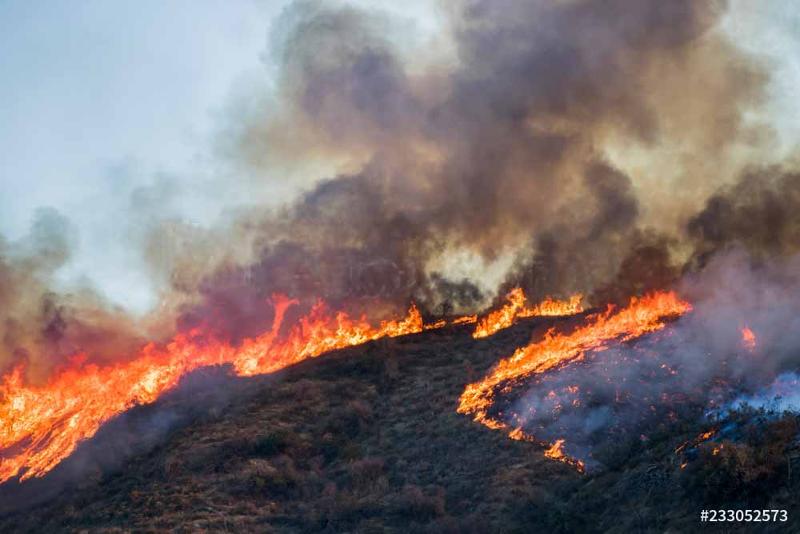Fire effects

You were introduced to plant responses to fire in the "Plant Adaptations" lesson (Week 6). You also learned that different plant communities have very different histories of exposure to fire and that their dominant species differ in fire-tolerance.
Understanding effects of fire is important in California for both safety and conservation reasons.
From a safety standpoint...
- Under a mediterranean-type climate, fires often occur in the dry summer/fall, followed by a rainy winter. Rains following fire frequently cause mudslides. Both fires and the subsequent mudslides destroy property and kill people.
- Efforts to reduce fuel load with a vegetation treatment that kills deep-rooted shrubs also removes the deep roots that help hold soil in place, making post-fire mudslides more likely.
- Efforts to reduce fuel load with vegetation treatments that kill perennial plants may lead to dominance of the site by annual plants that are dead and dry during the summer. This provides more easily ignitable fuels than the fuels provided by live perennial plants, and leads to more frequent fire starts.
From a conservation standpoint...
- Fire may eliminate or may promote the spread and survival of California native plants, including rare endemic species. Different species respond differently to fire. Different fire frequencies will have different effects on the populations of different species.
- If fire leads to dominance of a site by non-native annual grasses, competition with those grasses following fire may eliminate native, endemic and rare species.
- If fire leads to dominance of a site by annual grasses, dead grass in summer may promote more frequent fire ignitions, and the too-frequent fire may eliminate many native perennial species. This feedback, in which annual grasses increase fire frequency, which in turn promotes annual grass dominance (because the fire is too frequent for most perennial species to persist) has been called the "grass-fire cycle".
Human influence on fire regimes have been long and varied. Humans set fire, both intentionally and by accident. They also try to put fires out. Prior to human colonization of California (13,000-15,000 years ago), humans did not influence the fire regime (of course). By the time Europeans made first contact in the 1500s, indigenous tribes (the first human colonists) were deliberately burning vegetation yearly (although it is not known whether they burned the same site yearly). In the early 1900s, as the European population of the state grew, fire suppression efforts became popular. Then, as forests became more dense, posing dangers of more catastrophic fires, prescribed fires were promoted to simulate the pre-1900 fire regime and keep forests more open.
Fire is often used as a management tool. However, different plants and plant communities react differently to fire and different fire regimes. To achieve a goal (e.g., reduction in fire frequency, reduction in fire intensity, reduction in mudslide hazard, conservation of rare plants and animals, etc.) by manipulating a fire regime, one needs to know the responses of the species in the system.
...and that is the long introduction about why you need to learn this stuff.